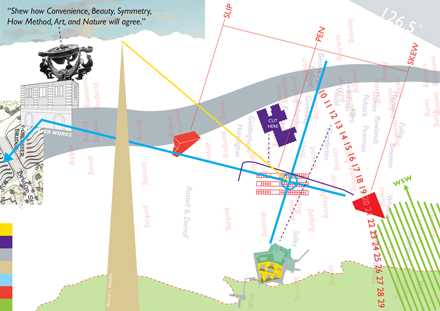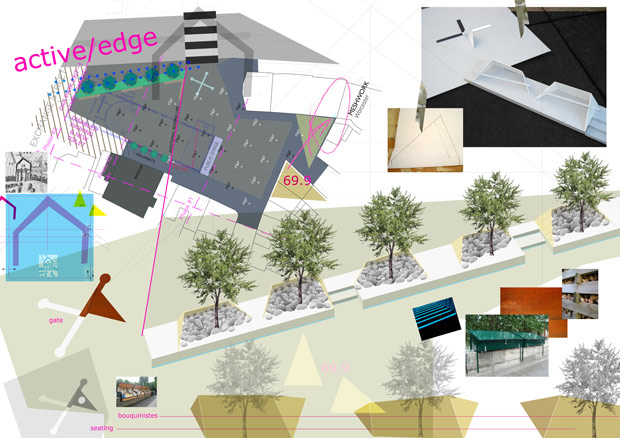- Robert Colbourne
- About
- Working
- Loading Bay Pocket Park
- Exchange
- 29-32 Mary Street
- King Edward VI Sixth Form College
- Tamed [Flood Management Scheme]
- Smithfield Site
- Frames - King Edward VI College
- James Watt Campus, Birmingham Metropolitan College
- Kemble Airfield
- Fargo
- Woodthorne Residential Housing Development
- Muchall Grove Housing Development
- Gravesend
- Meshwork Worcester
- Quadrant, Network Rail National Centre
- 20ft to an Inch [Sustrans]
- Birmingham Coach Station, Digbeth
- South Wolverhampton and Bilston Academy
- Longton Plots
- Pride of Place, West Bay
- Darwin Hall
- Light in Benmore - Optima Housing Association Art-as-Maintenance Report
- Smithfield 1 Proposal
- Interchange
- Turning Wall
- Springfield Brewery
- Constellations, Optima Housing Association
- AFC Telford United
- Stourport Day Book
- Stourport markers
- Changing Landscapes
- Rea Park, Digbeth
- Rea Crossing, Digbeth High Street
- Green Bridge Feasibility Project
- BryantPriestNewman 10
- Longhouse CPD, Confluence and Mythe
- Landscapainting
- Rd
- At any specific
Meshwork Worcester [2011 - 13]
An artist-led initiative that builds partnership with Worcester City Council (Heritage & Design Team) and University of Worcester (Humanities & Creative Arts). With David Patten and Stuart Mugridge.

Meshwork Worcester was an artist-led initiative that built partnership with Worcester City Council (Heritage & Design Team) and the University of Worcester (Humanities & Creative Arts). The first phase of Meshwork Worcester aimed at investing artist thinking (R&D, action research, and infrastructure building) in the period between public consultation on A Master Plan for Worcester (David Lock Associates, 2011) and in advance of the publication of the Coalition Government's new National Planning Policy Framework.
'Meshwork Worcester' was with Stuart Mugridge and David Patten working in response to the thinking of social anthropologist Tim Ingold, in particular his notions of 'taskscape' and 'meshwork' and Stephen Wright's identification of the potential of the artist 'of extraterritorial reciprocity'.
1. Wider [City] Research
I began researching as part of the Meshwork team, to understand how artists, enginners and architects had contributed to the city over time, and how we might interpret their ethos to encourage and inform future city-building aspirations. In addition to this and to support the other' research I examined and cherry-picked from everything we saw relevant: the recent Masterplan; our archive research and developing narrative; planning guidance; public art policy and strategy; successful schemes; and even international and national aspirations in things like Water Sensitive Urban Design (as Worcester floods quite regularly). From this and other work, we gained a sense of direction and common purpose.
2. Analysing Particular Sites and Taking the Masterplan Forward

In response to the masterplan, the city council had begun to develop ideas regarding four sites across the City that would be intrumental in creating a better East-West axis. I began by researching one particular site [St Clement's Gate] and this also became a later focus for the team. We created many drawings that both challenged council plans and enriched them with content. We produced poetic text in conjunction with documented investigations of the site and proposed ways to activate the sites with events in connecton with others.
To initiate these connections, we devised two events linked to 'Space-place' and 'Composting Culture' confererences that were being led by the University of Worcester. Both times, myself and Stuart Mugridge led delegates in conversations about the city, framed by specific and past creative city-building contributions and discussed the identity and future of the site. Talking to art lecturers and students also aimed to build interest and involvement.
From these type of explorations and activity, we saw how artist-activity might challenge the defensive thinking about the city's flood plain [1] and visually demonstrate Worcester's cultural well-being. We also initiated proposals of a place-lab [2] that could be more proactive than the City's public art panel.
Poetic text written as part of the St Clement's Gate study of the City's East/West axis :
William Forsyth's 19th century terracotta sunflowers
Are Asteraceae composite hyperaccumulators
Or gardens that interanimate an architecture
Of Walter Ritchie's post-War proposals for shared allotments and sheds
That catch, channel and screen the rainwater across the cattle market park
And over the two acres of Mr. Millington's cabbages, in an 18th century Artichoke Field
John Gwynn's "Shew how Convenience, Beauty, Symmetry, How Method, Art, and Nature will agree"
Becomes an art of unnameable hybrids
That charge the city's everyday plexus with Leader Williams' earthy matters,
That skew John Constable and Samuel Smith panoramas
Through oblique arches, up spires and to peaks of distant hills,
That slip gilded paths with water's edgemarks
Through gate, over sidings, past wall, over ditch and pool, pitch, road and river to the transpontine,
And that pen narratives into textures across crossings
Of sitting-room-caught pike
Or the Screen House refracting and guiding the eye around the convex east bank,
From the South Quay to the Upper Quay stonemason and waterwork's moorings
And up across the plain,
Pearmain and alder become dotted with the plum accents of Octar Copson's brush.
3. Public Art-Guidance
As a response Meshwork Worcester's discoveries and the notion of 'cutural well-being' [3] in the then new National Planning Policy Framework (NPPF, 27.03.2012) and with the City's Heritage and Design team, I was involved in jointly preparing a Worcester-specific over-arching vision statement advocating involvement of artists in planned development. Our resulting simple public art guidance "encourages place shaping processes that resist reactive piece-meal responses to cultural well-being; supports officer dialogue with future developers; links the potential contributions of artists to relevant planning policy; and provides specific guidance on 'Public Art Process and the Planning Process'(particularly with respect to the early involvement of artists in the development cycle)." [4]
The PAG creation was also directly linked to the council's intentions for mechanisms to fund art in the future [5]. Research was also undertaken into past 'town artist' models in the UK.
4. The Cornmarket

With the aim to reclaim the Cornmarket as a focal space for the city, Meshwork Worcester put theory into practice by being commissioned to create a 'Workable Diagram': a 26 page artist-led document that contributed a further layer to the vision set out in the Worcester City Masterplan Vision (July 2010). 'Art-working' included archive reasearch; on-site investigation; drawings of site geometries and the wider relationship to the City's East West Axis proposals; sun path simulations; colour palettes, proposed layouts and ways to support and activate flexible public space. Meshwork Worcester provided key proposals for lighting, sound and the creation of an permanent 'estrade'-or stage on the footprint of Worcester's lost Public Hall. In addition to the this I was heavily involved in ideas for an 'active edge' that could give a sense of enclosure to the square and substance to the line of the lost city wall and Watercourse Alley. Along with tree planting and sculptural elements, the active edge would harness city-performative elements of seating and particular small market plots that wouldn't compete with other market arrangements in the city.
Rather than see a statue of Worcester-famous 'Vesta Tilly' being placed at this site because of her strong conection to the Public Hall, we saw her performance eccentricities and humour begin to shape the ethos and delivery of a programme of meaningful 'participation as consultation' events. These would input into the design and programming of the Cornmarket through on-site experimentation. We contested that her influence could see the square as city-building event, rather than just an object included in an "isolated patterning of landscape materials and pedestrian/vehicular movements".[5]
[1] The proposed activation of a currently redundant on-site building 'The Screenhouse' by Worcester Univesity that could, amongst other uses, investigate the notion that Worcester comes alive when it floods.
[2] "To inform, enable, advise and review art commissions and programmes in future built environment/development projects". David Patten, Meshwork Worcester 2012
[3] See : Meshworking Cultural Well-Being, David Patten, Commissioned and published by ixia, the public art think tank 16th January 2013
[3] From David Patten's evaluation of Meshwork Worcester 2012
[4] The City Council's Heritage & Design Team aimed to implement a pooling mechanism of funds from Section 106 agreements and potentially Community Infrastructure Levy.
[5] When the Right Girl Comes Along: A Participatory Model for Worcester, Stuart Mugridge/Meshwork Worcester, May 2013